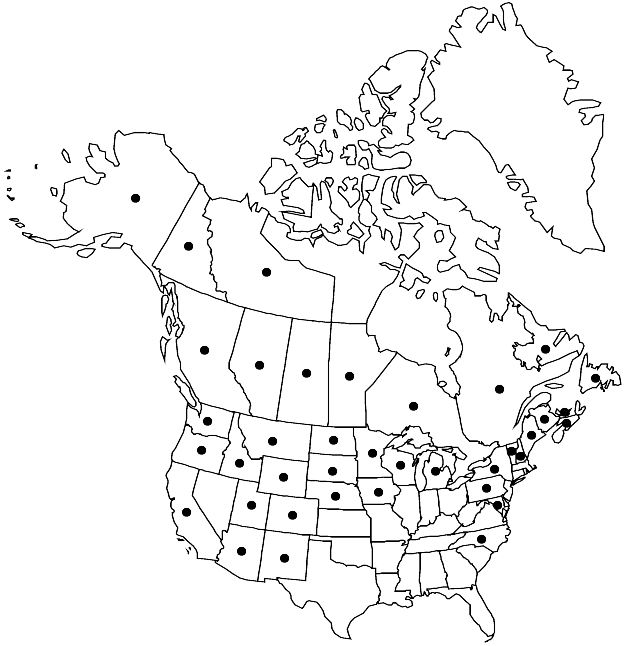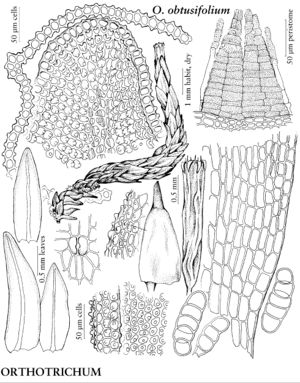Orthotrichum obtusifolium
Muscol. Recent. 2(2): 23. 1801.
Plants 0.3–1.4 cm. Stem-leaves erect-appressed when dry, ovate to ovatelanceolate, 1.4–2 mm; margins erect-incurved, entire; apex obtuse; basal laminal cells ± rectangular, walls thick, not nodose; distal cells 13–18 (–20) µm, 1-stratose, papillae 1 per cell, conic, large. Specialized asexual reproduction by gemmae on both surfaces of leaf. Sexual condition dioicous. Seta 0.5 mm. Capsule 1/2 emergent, oblong-cylindric, 1.6–2 mm, strongly 8-ribbed to base; stomata superficial; peristome double; prostome absent; exostome teeth 8, reflexed, evenly papillose, sometimes irregularly striate distally; endostome segments 8, well developed, of 2 rows of cells, smooth. Calyptra short-conic, papillose, naked, not plicate. Spores 20–25 µm.
Habitat: Trunks of Populus, Juniperus, aspen, base of scrub oaks, river bottoms
Elevation: low to high elevations (10-2000 m)
Distribution

Alta., B.C., Man., N.B., Nfld. and Labr., N.W.T., N.S., Ont., P.E.I., Que., Sask., Yukon, Alaska, Ariz., Calif., Colo., Idaho, Iowa, Maine, Md., Mich., Minn., Mont., Nebr., N.H., N.Mex., N.Y., N.C., N.Dak., Oreg., Pa., S.Dak., Utah, Vt., Wash., Wis., Wyo., Europe, Asia
Discussion
Orthotrichum obtusifolium is a pronounced xerophyte growing only in pioneer situations. This species might be confused with O. exiguum, O. flowersii, and O. gymnostomum, but these species do not have distal laminal cells with one papilla per cell as do those of O. obtusifolium. In addition, O. exiguum and O. flowersii have reflexed to revolute leaf margins, and both are autoicous. Orthotrichum gymnostomum has distinctly involute leaf margins and concave leaves and is dioicous. The capsule stomata of O. obtusifolium are found at or beyond mid capsule.
Selected References
None.
